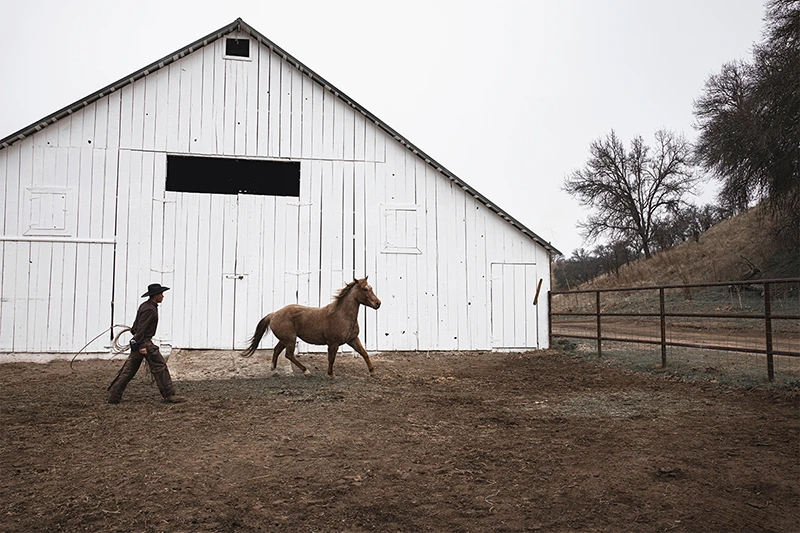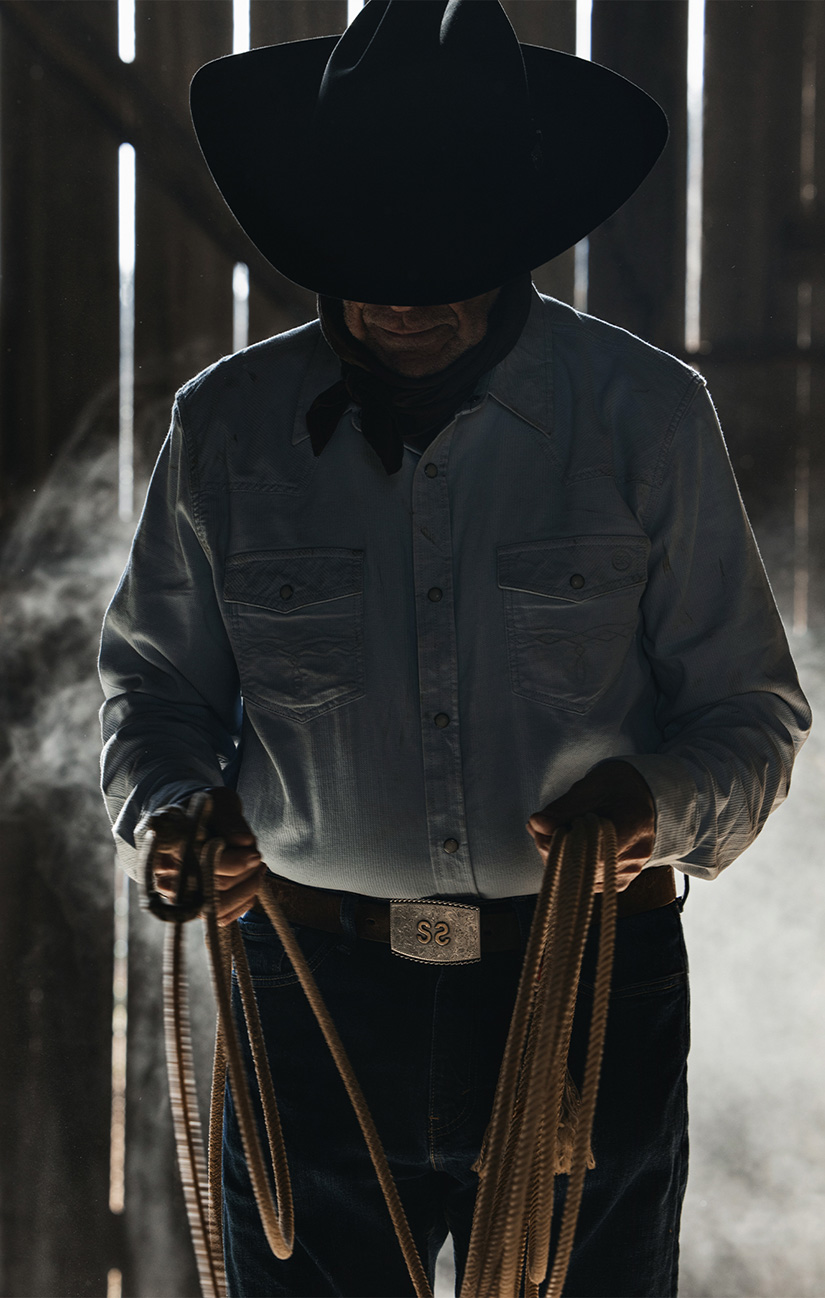

Avenales Ranch: Six Generations of Regenerative Ranching by the Central California Coast
Off the side of a lone road in the hills of San Luis Obispo County, wildflowers are in bloom. Orange poppies, yellow buttercups, fragrant lupines, and more—it’s spring on Avenales Ranch. The field of flowers bursts with life and color around this time every year, but it’s not just a result of the changing seasons. 150 years of careful cultivation by the Sinton family has made Avenales Ranch an ideal habitat for hundreds of plant and animal species to thrive. It is also where the Sintons have been operating a cattle ranch and vineyard for six generations using regenerative ranching practices that preserve the land’s natural resources, creating a better place for the plants, animals, and every future generation that comes to live on the land.




Growing Up on a Ranch
Daniel Sinton, a fifth-generation rancher at Avenales Ranch, meets us for a conversation on the ranch’s legacy and regenerative techniques in a 115-year-old barn, one of the oldest and largest on the 18,000-acre property that is made up of two ranches, Avenales and Canyon. We have two cattle ranches here on the central coast of California,
says Sinton, a 12,000-acre ranch called the Avenales Ranch, and we also have the Canyon Ranch. The Avenales Ranch was started in 1875, and the Canyon Ranch started in 1906.
Avenales was founded by Sinton’s great-great-grandfather and every generation since has been raised on the ranch. Sinton’s childhood was steeped in the simple beauty of rural living. One of my earliest childhood memories is just always being outside here on the ranch with my dog,
he shares. I’d come home from school, I’d grab my dog and a snack, and I’d head out and
just be out on the ranch. I did a lot of hiking or riding on horseback.


This way of life instilled in him the importance of Western values, and a lifelong desire to keep them alive. Sinton explains, I can remember going to my grandparents’ house for dinners with my parents and just hearing the different generations talk about different times. Something that my father has passed down to me that's really important is that we're here to preserve the land not just for us, but also for future generations of the family, the community, and the animals and plants that call it home. Everything we do every day is to keep the place like it is and preserve it for future generations.
Sinton’s children are currently the sixth generation of the family to grow up on the ranch, and now it’s Sinton’s turn to
pass on the traditions he learned from his parents and grandparents to them. One of the best things that I'm trying to teach my kids is the resiliency that comes from growing up on a ranch. There are constant challenges—weather, cattle, and all the things that happen out here. They really build resiliency in who you are as a human.






Restoring the Land Through Regenerative Ranching
In addition to being resilient ranchers, what keeps the legacy of Avenales Ranch alive is the Sinton family’s dedication to preserving its natural resources. For over a century, the family has worked on developing a regenerative system that combines historic ranching methods with scientific knowledge of the soil.
Sinton explains that despite seeming like complex technology, regenerative agriculture relies on some of the oldest and
natural forms of ranching. It focuses on maintaining the health of the land to raise good crops and animals that go on to become higher quality food for the nation. One of the biggest misconceptions about regenerative agriculture is that ranchers aren’t pretty much already doing it and have been doing it for decades,
says Sinton. Regenerative ranching is what most ranchers do anyway. We are all out here looking to make this a better place, and oftentimes that has to do with making the soil better or making sure that the animals are eating in the correct patterns. But regenerative ranching has a real soil focus, and now we’re putting a lot of science behind it. That combination of historical knowledge and new sciences makes regenerative ranching a really important piece of the future.






It is also a system that depends on the rancher’s purpose in caring for the land. Sinton explains, When you run cattle together in a high impact movement, we're able to generate growth that is both above and below the soil. There's this huge system that we're a part of. Cattle are a really important part of that system, and us moving them around as ranchers is key for the timing.
According to Sinton, regenerative ranching is a return to agriculture at its purest as it relies on the natural relationship between the land, plants, and animals to keep the system going. If you want to get into the nitty-gritty of regenerative agriculture here on this ranch, the cattle bite the grass and when the grass gets bitten, their saliva enacts something that interacts with the soil, and then the roots react to the plant being bitten by that cow. They die off a little bit and then all of a sudden, they shoot this huge growth down further. And when that happens, you're building a lot more soil. You're going to get taller green grass, which is going to create a bigger and longer cycle of pulling carbon out of the air.
All components of the ranch—from the land to the animals and the ranchers—work together in this system to create a better, healthier place. For the Sinton family, preserving this system and way of life is what being a rancher is all about.






Connected to the Land for Generations to Come
When Daniel Sinton breathes in the fresh air on Avenales Ranch every morning, he returns to the memories of growing up a cowboy on the same dirt paths he treads across now with his own family. Like his parents and grandparents before him, he finds purpose in knowing the ranch will be here for his children’s children and so on. As future generations of the Sinton family grow up on Avenales Ranch, they will have the resilience of their family legacy and centuries of regenerative ranching traditions to thank for the natural beauty and prosperity of the land they, and hundreds of plants and animals, call home.
We're out here every day connected to the land. I know all the migratory birds that are flying through right now. We manage habitat to create more water for the bear, deer, turkeys, and all the animals that are here. The environment is first and foremost in everything that we do. We've been here for 150 years, and this is what we do this for... It will look like this forever with open space for people and plants and animals.
— Daniel Sinton, fifth-generation rancher and vintner at Avenales Ranch


